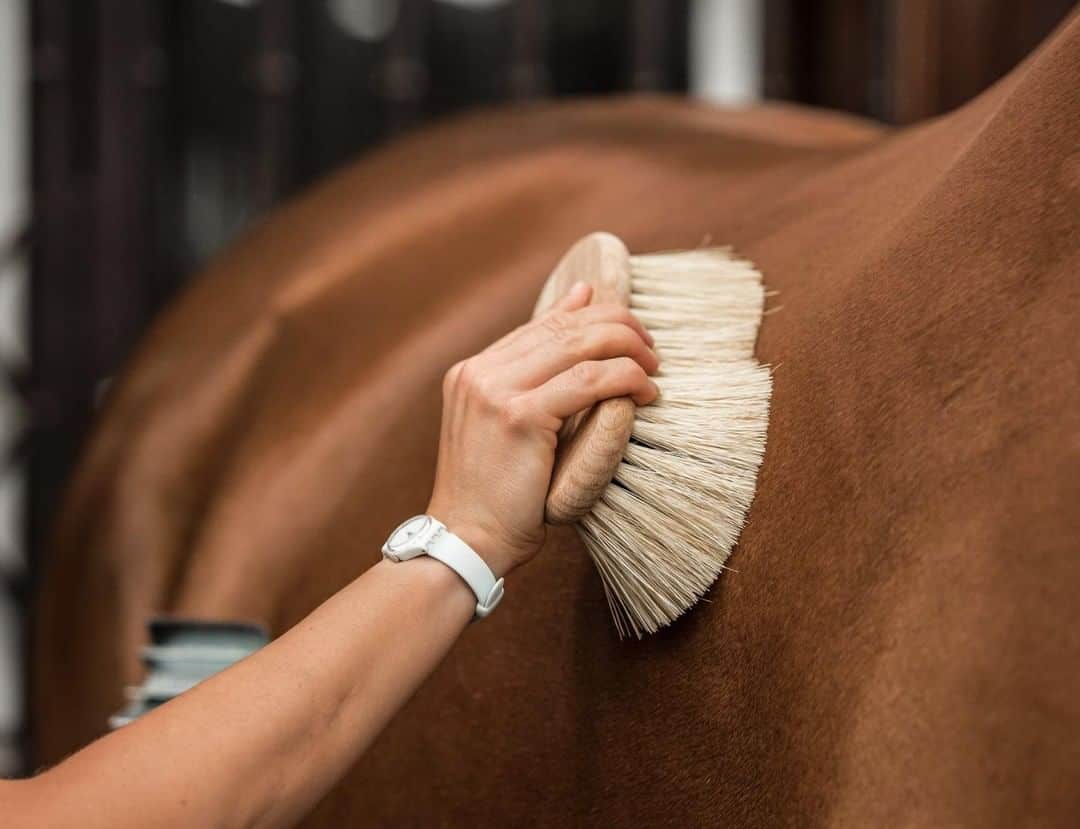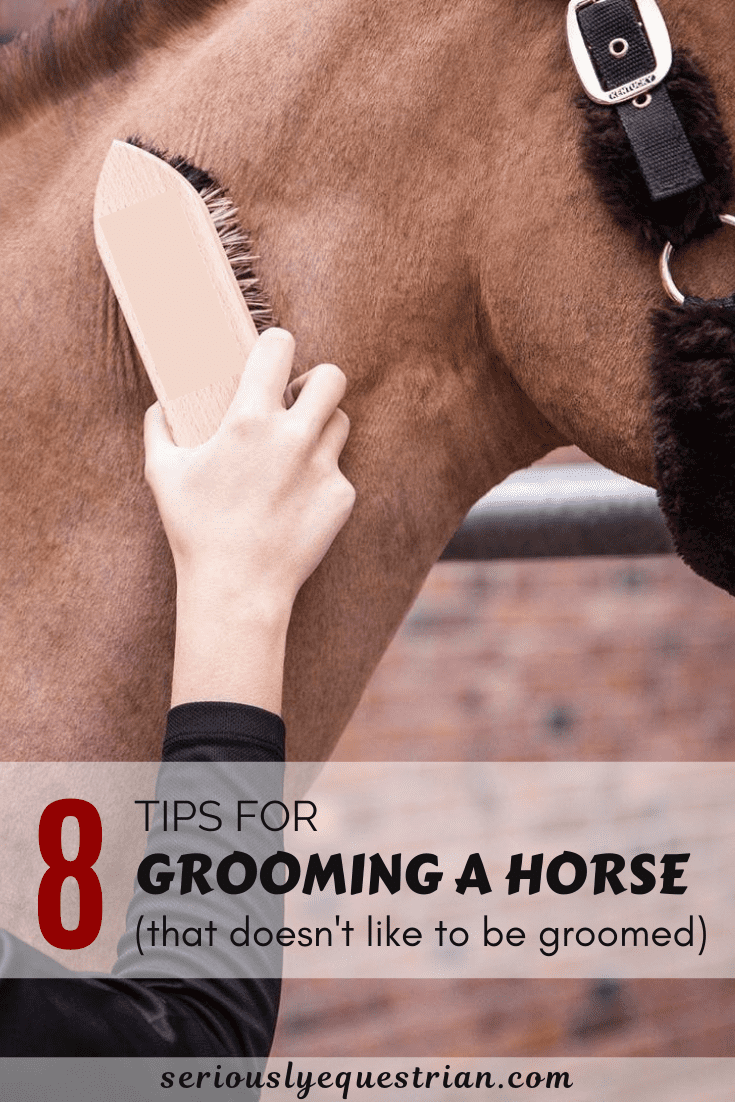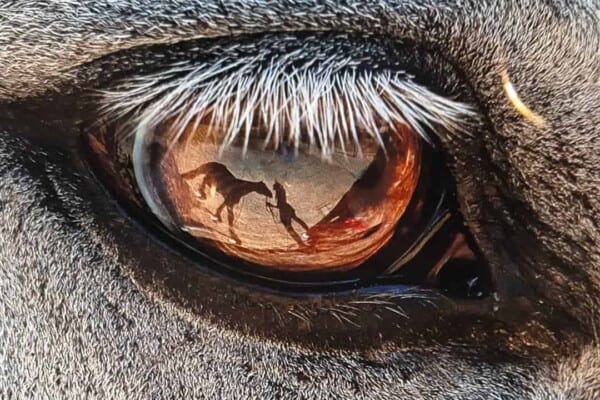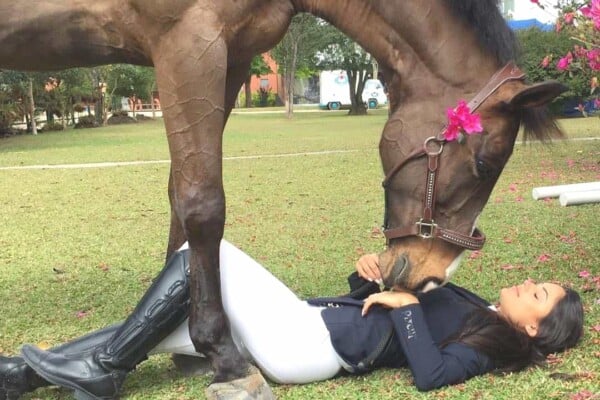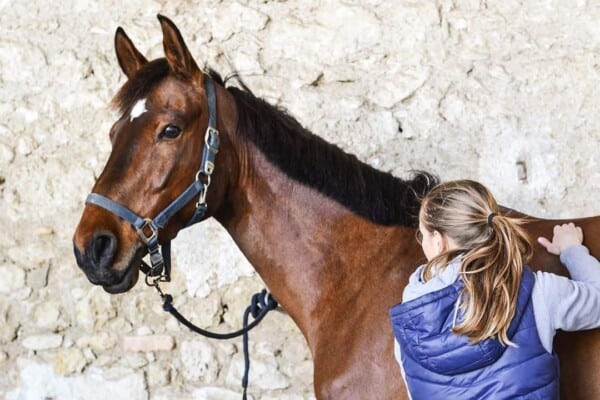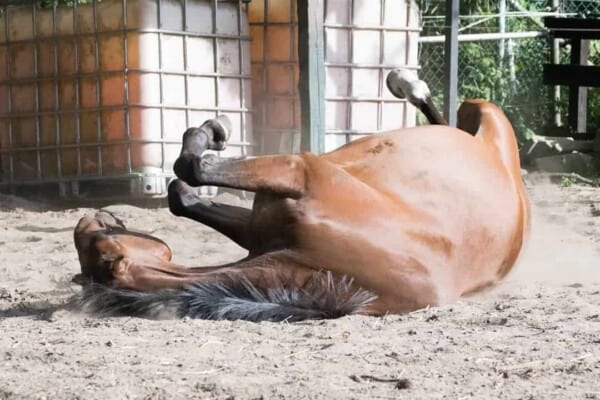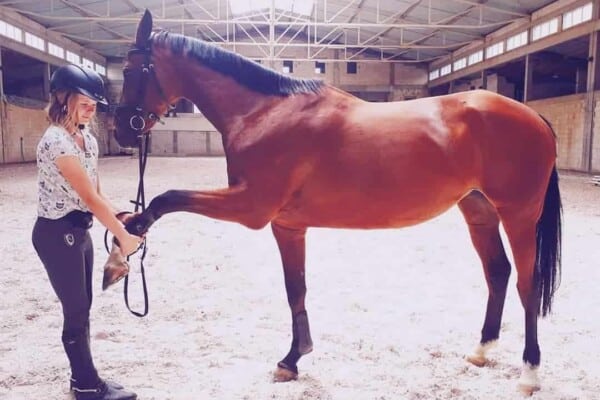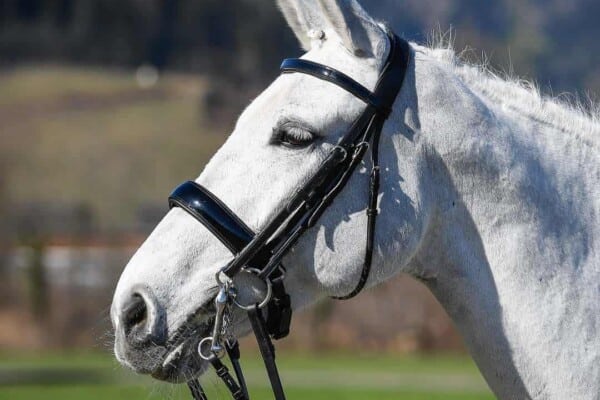Grooming is a very important activity both between horses in the herd and between handler or owner and the horse. Horses mutually groom each other to demonstrate care and attention to one another. Grooming between owner and horse has numerous health benefits and also establishes a connection and bond between horse and handler. Most horses love it but some horses get really cranky and just don’t want to know.
Grooming is important for health and welfare so how can you manage a horse that really doesn’t want to be brushed? Here are 8 tips to help you get over this particular problem:-
- Make sure the horse respects you and that his outward aggressiveness is not just a sign of bad manners. If the horse behaves like this whilst you are tacking up or leading him around then it could just be that there is a bigger issue than simply grooming and the problem needs to be tacked with some re-education sessions
- Lighten your touch – Some horses are thin-skinned and sensitive and find vigorous grooming uncomfortable – think about what you are doing and how you are doing it. Arabs and Thoroughbreds have very light, fine coats which barely change summer to winter; they are usually far more responsive and sensitive to touch on their skin than say a Cob or a native pony. Sometimes it’s just a question of lightening your touch. These horses often benefit from baths to keep their skin and coats in good condition rather than energetic grooming sessions. If you do have a horse with sensitive skin then be careful on your bath time products as well as sensitive skins often react to harsh chemicals, use something natural and hypoallergenic
- Take a look at your brushes – how soft are they? If your horse has a thin coat or sensitive skin then he may suit a brush with softer bristles or even a grooming mitt. Start with a rubber or gel curry comb instead of a stiff brush and then move onto a broad body brush with super fine bristles. If the horse is very muddy then a grooming mitt can work better than a dandy brush on dried mud if your horse objects to a coarser brush
- Try increasing pressure– Horses are all different just like people. Your horse’s dislike of what you are doing maybe because you are not actually brushing hard enough rather than the other way around. Some horses object to grooming that feels more like tickling rather than strapping so experiment with the amount of pressure you use to see if there is a level which the horse enjoys and does not object to
- Find out what spots they like and don’t like – Some horses only react during grooming sessions in areas that they are ticklish so typically around the girth area or belly particularly if the horse snaps when you do the girth up. Between the front legs or the hind legs is a no-go area for some and also around the face and ears although conversely, some horses adore having their faces brushed. One of the ways to deal with horses who have a part of their body which they don’t like being touched or even all of it is to go through a process of desensitization. There is no great mystery to this, it’s just a question of starting very slowly sometimes even with just your hand and very quietly increasing the amount of touch and stimulus you give the horse as he becomes more accepting. If there is any resistance then retreat to a part of the body which the horse is more comfortable with such as the neck or shoulder. Move from using your hand to stroke and pat the horse to working with a cloth like a small towel and then finally onto a brush
- Try the TTouch system- TTouch stands for Tellington Touch, a method that develops a trusting bond between horse and rider and can offer a solution to physical and behavioral problems. TTouch encourages horses to think rather than just instinctively react to a process they don’t like or are worried about
- Introduce each step very gradually – Horses which have been mistreated so have experienced rough treatment or simply not been handled at all will be very suspicious of something so up close and personal as grooming. Introduce every step very gradually and quietly, only use very soft materials at the beginning so nothing harsh, abrasive or noisy – remember those hissing aerosol sprays can be very frightening for a horse which is tied up. Don’t expect to make anything other than slow progress but be happy to go at the speed your horse is comfortable with, it will pay you back in the long run. Other activities and time spent with you will instill confidence and help the horse to trust you in other situations not just grooming
- Allow sufficient time to groom your horse and you are not just squeezing it in at the beginning or end of a riding session. Horses are super sensitive and react to the urgency and haste of your actions which may not be apparent to you
A horse which develops a sudden sensitivity, dislike or aversion to grooming where previously none existed should always be checked out for illness or pain.
There are many reasons why we should groom our horses. It is important for their general hygiene and cleanliness as we remove dirt and sweat from their coats. Grooming a horse allows the handler to closely inspect the horse for any injuries, to spot minor wounds or grazes, rubs and scrapes, insect bites or more serious lumps and bumps like sarcoids. Grooming is also an integral part of the unique and fulfilling bond that an owner can have with their horse. Like all good relationships it will require some compromise and some horses just dislike grooming either because of a past bad experience or because they just don’t like it. Respect your horse and find a technique that works for him.

